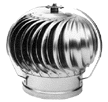Have a six year old Whitfield Advantage ll-T Classic FS pellet stove. Has a horizontal chimney out the northwest side of the house. Works great EXCEPT when the wind is blowing hard out of the north and out of the west. Stove will start-up O.K., blowers etc...and red "feed" light will come on, but will not drop any pellets. I believe the pressure switch is sensing back pressure. The ONLY happens when it's windy. I have in the past, (have fought this since new), pulled the orange rubber hose off the pressure switch and it will feed under windy circumstances. I can feel a breeze through the pellet feed whole when windy, unfortunately, I have yet to find anyone locally that knows much about these things. Spoke to the vendor I purchased from, he said he knew a guy that build a blockade around his chimney exhaust. Put an elbow on the outside last year, and this weekend put up some metal shelving around three sides of chimney. Cleaned the exhaust tube, pulled firebrick and vacuumed out, all to no avail. Very frustrating, had a blizzard here in Lincoln NE over Christmas and was not able to use my stove until yesterday when the wind finally died down! Do I need to put up some type of "igloo" contraption around my exhaust?
-I'm by no means any expert on these things, so any words of advice or references would be extremely appreciated.
-I'm by no means any expert on these things, so any words of advice or references would be extremely appreciated.



